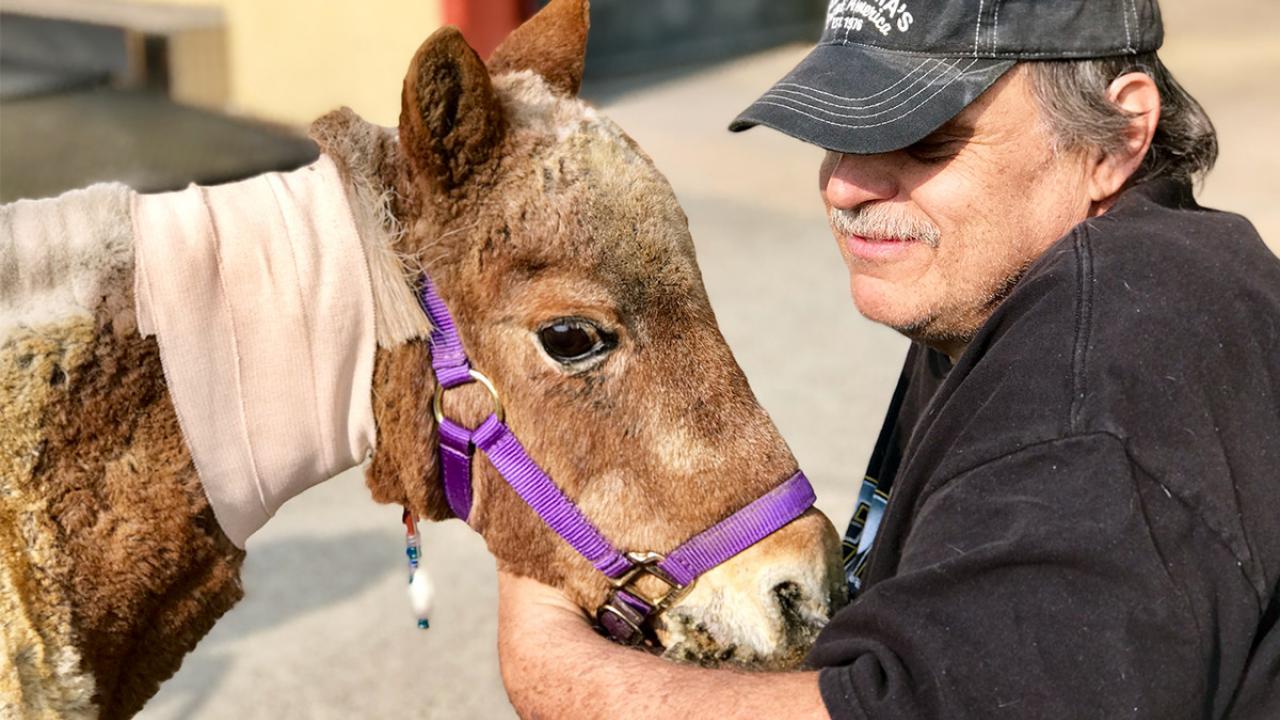As the Camp Fire continues to burn in Butte County, UC Davis continues its response on campus and off — coming to the aid of animals and people. The campus also welcomed home firefighters from the front lines.
Various members of the Veterinary Emergency Response Team, or VERT, have been at the Butte County Fairgrounds each day since Nov. 9, treating a variety of animals. The most serious cases continue to be brought to campus, and the Veterinary Medical Teaching Hospital now holds eight goats, two pigs, a miniature horse, three full-size horses, a llama, five chickens, a duck, a goose and 27 cats.
The number of cats has fallen as some of their owners have been identified, some thanks to a Facebook album of unidentified cats that has now been shared more than 110,000 times. Some of the owners have made tearful reunions with their pets, garnering global attention.
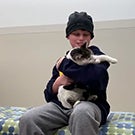
Facebook: Young boy back with his cat
UC Davis School of Veterinary Medicine: Reunited and going home! Robin's family came to pick him up today. His boy, Isaiah, had saved Christmas and birthday money to adopt him and his brother this spring. The family lost everything in the #Campfire, but are thankful to have Robin back with them. Thank you to Dr. Joanna Kaplan, the dedicated veterinary technicians, residents and students who have provided the best care for Robin and the rest of the pets.
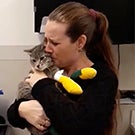
Facebook: Tearful reunion with Mayson
UC Davis School of Veterinary Medicine: ANOTHER SUCCESSFUL REUNION!
Laci Ping and her husband, Curtis Mullins, adopted Mayson just two weeks ago. The tabby escaped his carrier when an explosion startled him during the #CampFire evacuation.
She came to #UCDavis yesterday to identify Mayson, who has to stay another week while burns on all four paws heal. “He’s all taken care of,” she said. “I have nothing to worry about.”
Laci said Mayson is the sole bright spot during a very stressful time. “The one good thing in our lives at the moment is him.”
Video courtesy of Curtis Mullins.
VERT’s work is far from done, as animals housed at the Butte County Fairgrounds in Gridley — which include some 300 doves and 100 chicken — must be moved before this week’s rains. UC Davis poultry specialist Maurice Pitesky and California Raptor Center Director Michelle Hawkins have been on hand to help.
A second VERT team has been sent to the Red Cross shelter for people and pets, located at the same fairgrounds.
The School of Veterinary Medicine welcomes donations to a pair of funds:
- Veterinary Catastrophic Need Fund for treatment of animals like those coming in from the Camp Fire
- Veterinary Emergency Response Team
Fish brought to campus
RELATED CONTENT
More animals have found safe refuge elsewhere on campus: 89 koi and fancy goldfish.
Paradise Town Councilman Scott Lotter and his wife, Tracy, lost their home in the fire but were able to save dozens of their koi and fancy goldfish. Professor John Madigan, director of VERT, provided advice to help Lotter build a temporary tank in the bed of his pickup truck, and the councilman loaded up the family fish and brought them to the Center for Aquatic Biology and Aquaculture, or CABA, a unit of the College of Agricultural and Environmental Sciences.
“It’s a little miracle,” Lotter told the San Jose Mercury News. “You need something to hold onto at a time like this. At least we could save the fish. They are like our babies.”
Lotter has since made two more trips to Paradise to rescue additional fish, bringing the total to 89 that are now residing in CABA tanks west of Highway 113. That’s more than three times as many fish as the center housed during last year’s Tubbs Fire in Santa Rosa.
Nine fish from the Tubbs Fire are still housed at the center, but a family plans to adopt them soon.
Raptor Center moves birds indoors
The California Raptor Center had to move 17 resident raptors indoors because of poor air quality from the fire. The birds’ respiratory systems are very sensitive to smoke and particulate matter, according to Hawkins, the center’s director.
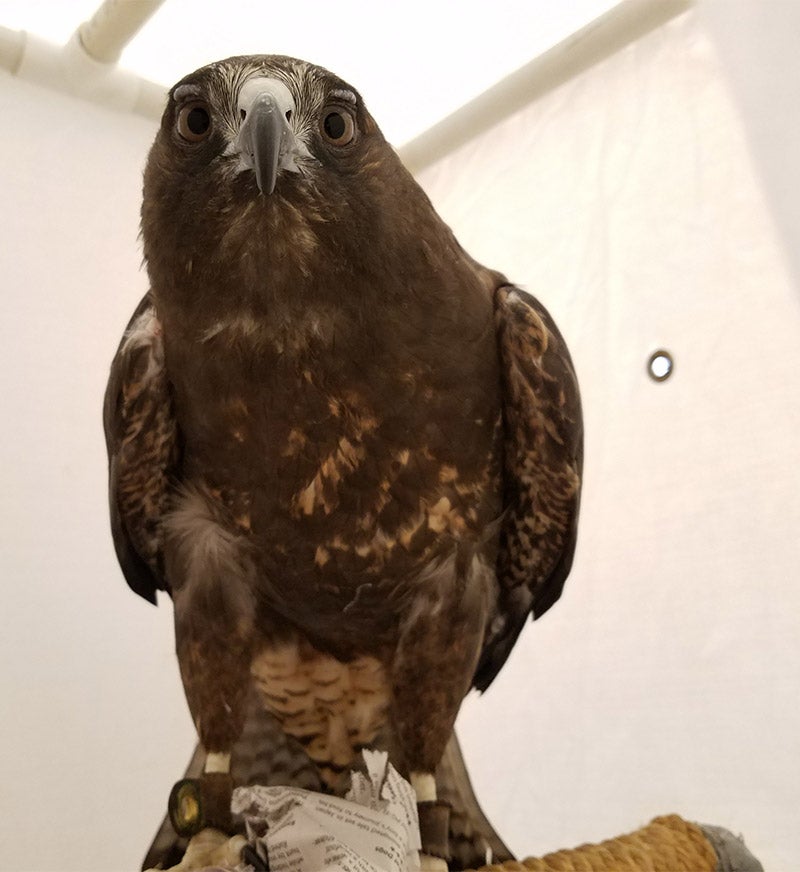
Last week four staff members had to find creative ways to make enclosures for the birds. Hawkins said she doesn’t think the center has ever had to move the birds indoors in the center’s history.
“We’ve had only one or two days of unhealthy air before, but it has blown through very quickly,” she said. “We’ve not ever seen it this bad for this long.”
Hawkins said they are keeping a close watch on the raptors for any signs of respiratory distress, but so far all of them are healthy.
Students lend aid
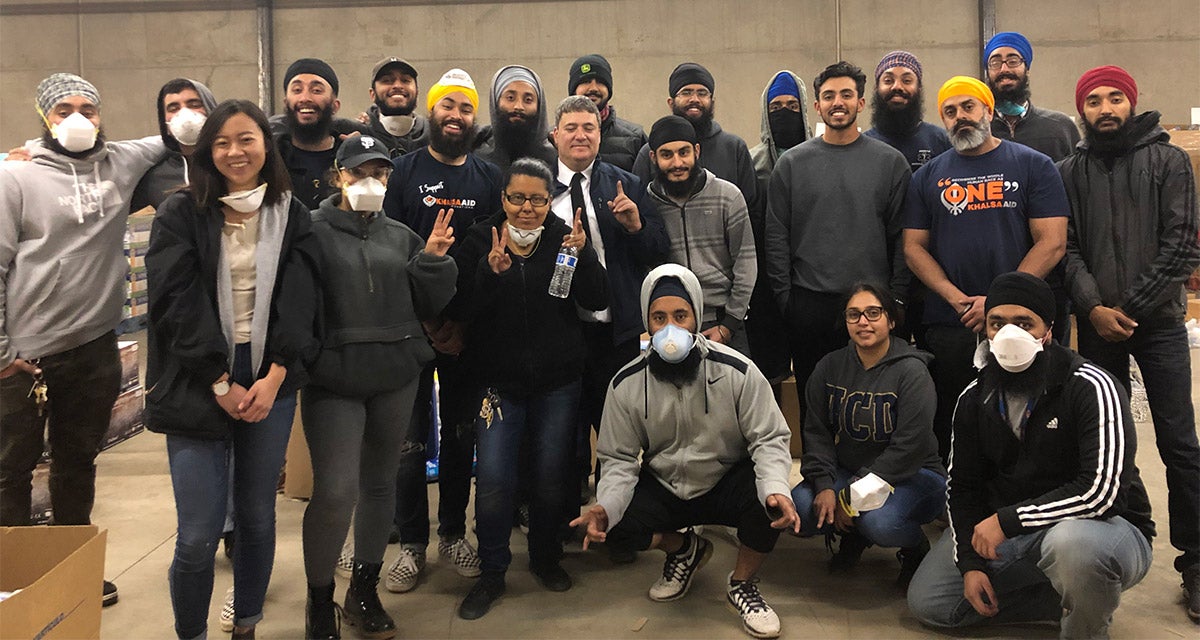
Friday’s campus closure (Nov. 16) was anything but a day off for a group of about two dozen students. Members of the UC Davis Sikh Cultural Association collected jackets, underwear, socks, female hygiene products, canned food, water and 300 backpacks requested by a Chico shelter. Donations came from students, alumni, Davis community members and the international nonprofit Khalsa Aid.
The cultural association, along with UC Davis alumni, delivered the items to the shelter and volunteered at a Salvation Army warehouse, an experience that senior psychology major Deepinder Nagra called “unreal.”
“Just seeing how difficult it was for people that had lost everything and how something so little like socks meant so much for them,” Nagra said. “The workers there (at the warehouse) said it was as if God had answered their prayers seeing 25 volunteers come to help them. ... The workers later said that we had saved them about a day or two of work in just the three hours we were there with them.”
Nagra said the group was fulfilling one of the central tenants of the Sikh religion by helping others. “To me it’s never a decision whether to get involved or not, but rather a decision of when can we get there and start serving,” he said.
The group plans to make another trip in the future, and any interested volunteers can contact the group through Facebook or Instagram.
Fire crews return
After spending nearly 10 days on the fire lines, a four-person engine crew from the UC Davis Fire Department has returned to campus. Capt. Cess Mercado, engineer Derek Carthy and firefighters Mike Cullen and Lindsey Dubs were deployed as part of the immediate response on Nov. 8, and served on a strike team in Butte County until Saturday (Nov. 17). They were released that day, but their departure was delayed slightly by the visit of President Donald Trump. The group arrived back on campus later that day.
A day earlier, Capt. Steve Dunn was sent to lead a separate strike team; he was sent home three days later (Nov. 19).
Still, more than 4,500 personnel and nearly 400 engines are still on the fire lines, according to Cal Fire’s report this morning (Nov. 20). The fire had covered 151,000 acres and was 70 percent contained, the agency said.
— Trina Wood, Amy Quinton and Diane Nelson contributed to this report
